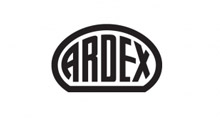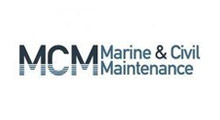
An American Lawyer’s Take on Strata Failures
Written by Francesco Andreone from GoStrata Stak (substack.com)
When an American strata lawyer writes in the New York Times about strata building failures, it’s worth listening, thinking and learning. Here’s what I’ve distilled from his insights …
Introduction
Last week I wrote about some of the crisis lessons from the partial collapse and demolition of Champlain Towers South in Surfside, Florida in my article ‘7 Lessons from Florida for Australian Strata’ and how more lessons would come over time.
But, the tragedy is also an opportunity for some strata introspection and to develop new approaches to the operation of strata buildings.
So, in today’s article, I’m showcasing that kind of thinking by an American strata lawyer that’s been published in an opinion guest essay in the New York Times called ‘I Know All About Condo Living. Change Is Coming’ by David B. Haber.
David Haber is a Florida lawyer who practises and is certified by the state bar in condominium law at Haber Law.
It’s worth reading in full even though I am highlighting what I have taken away from the essay for Australian [and other international] strata stakeholders.
My strata takeaways
The essay covers issues that are familiar to many of us in strata land and contains this poignant analogy:
‘for far too long, condominium owners have in essence eaten at the table and then left the restaurant, moving on and leaving subsequent owners to pay the bill for delayed maintenance that should have been paid for long ago when the tab was run’
But, David Haber also makes the following more practical comments, predictions and suggestions.
- Low levels of and/or delayed building maintenance is common and exacerbated by the politics in strata buildings between strata owners who have differing priorities, who may be ignorant of the issues and/or can have short term agendas.
So, strata building maintenance obligations need stricter enforcement and decisions may need to be taken away from strata owners.
- The lack of money in strata building reserves is a complicating factor that creates incentives to ignore, delay and/or short cut works.
So, better funding solutions are required like obligations to provide adequate reserves for all life-safety repairs and these funds should be segregated.
Plus, where strata owners cannot fund these works, state or federal loan programs could be created. We are starting to see these kinds of programs in Australia with government loans being offered for combustible cladding repairs in some states as I’ve outlined in my article ‘A Combustible Cladding Round-Up’.
- Mandatory checking and certification of strata building structural integrity should occur. And, that should occur sooner [within 20 years] and more frequently after that.
There are no requirements for those inspections to occur in Australia after construction is completed, but we’re starting to see instances of structural failures more frequently with buildings like Opal Tower, Mascot Towers and Toplace as I’ve highlighted in my article ‘Serious Structural Faults: The New Normal in Strata Buildings’.
- More focus should be placed on waterproofing in building codes [especially in coastal areas] since the impacts of water entry on concrete structures has significant structural impacts.
Since waterproofing failures are one of the most common defect types identified in Australian research [see my articles ‘Strata Building Defects Typologies Overviewed’ and ‘How Big is the Australian Strata Defect Problem?’] and because so many Australian strata buildings are in coastal locations, that issues and the Florida experience is particularly relevant to us.
- The lack of knowledge and expertise of condominium board members is another contributing factor to the problem due to a lack of skill, leadership and guidance from the elected leaders in many strata buildings.
David Haber suggests more education and training requirements which can help. But, I suspect this is a much more difficult challenge to overcome.
- These maintenance, compliance and structural issues will lead to higher scrutiny of strata buildings by insurance and lending industries who look to minimise or eliminate their own risks resulting from strata building and strata owner governance failures.
That probably means higher insurance premiums, more disclosure for renewals, stricter lending criteria [at the beginning and during the loan]. It might also mean more active involvement in strata building operations by insurers and lenders [who typically have rights to vote in Australia].
- All of these impacts will cost money for strata buildings and owners on investigations, communication, maintenance work, compliance activities and risk management, which will make condominium and strata living more expensive.
But that reality also further exacerbates the divide between strata title property and freestanding homes, the mandatory costs in strata buildings, and, their relative desirability.
Conclusions
Whether or not David Haber’s predictions will happen, there’s no doubt that events like the Champlain Towers South collapse will lead to changes for strata title buildings.
But, whether those changes will actually improve things for strata stakeholders is an entirely different matter as we’ve all seen proposed reforms fail to achieve intended outcomes and simply add to strata operational complexity, delay and cost.




















